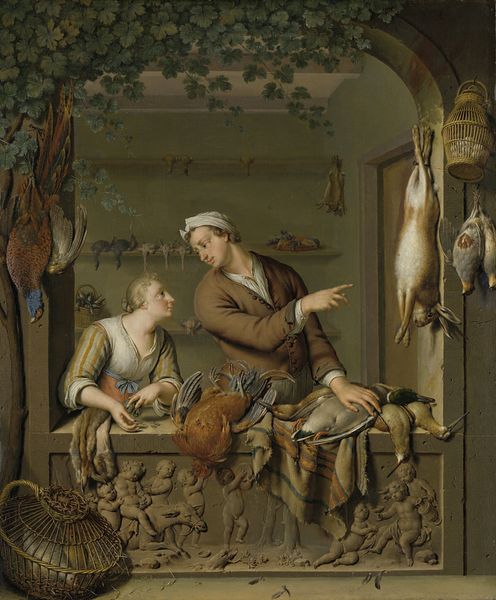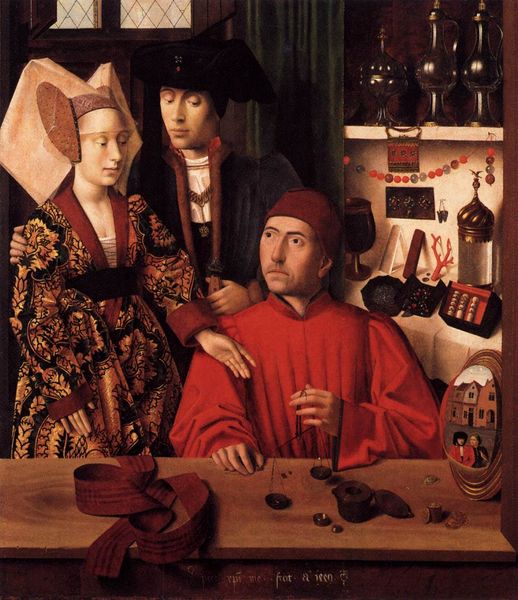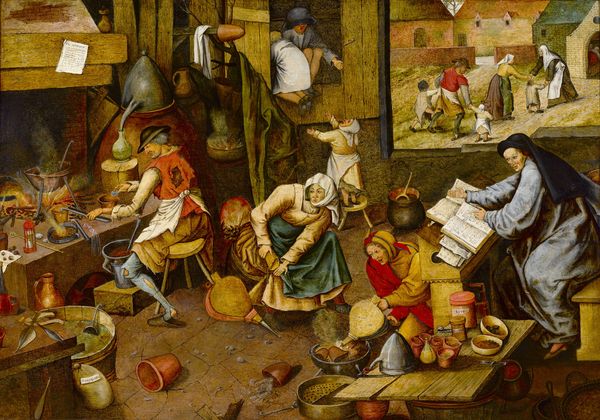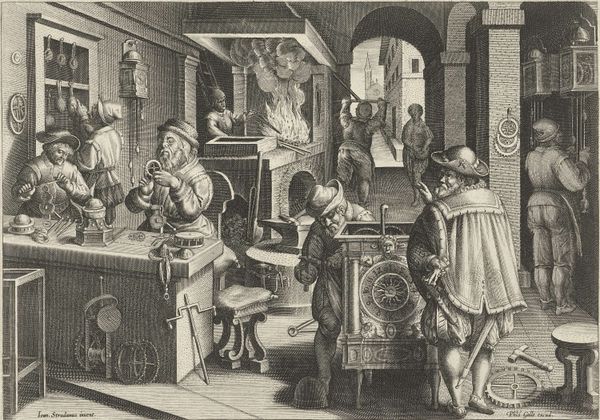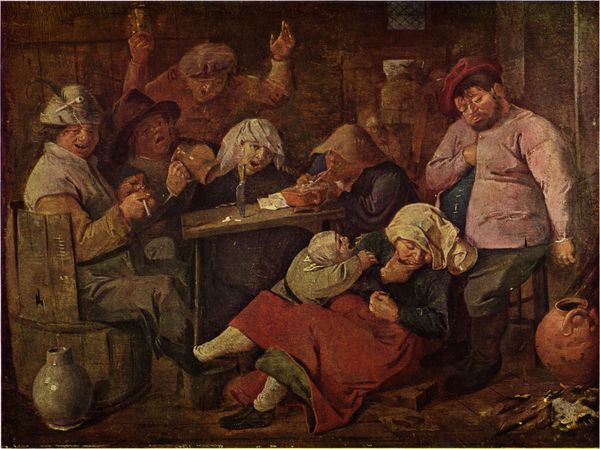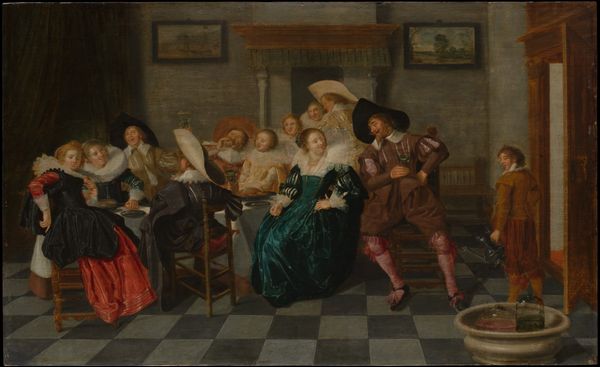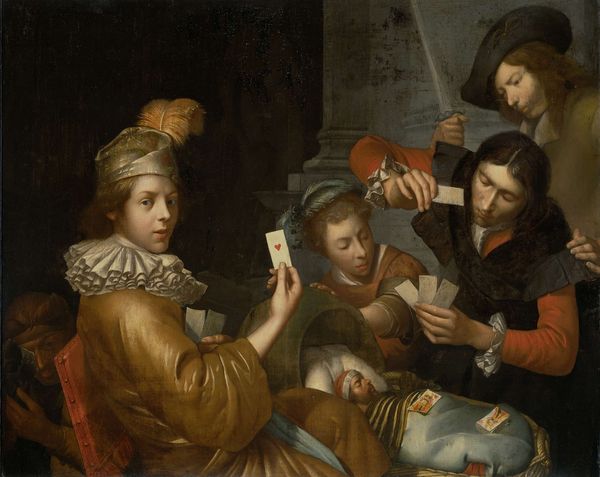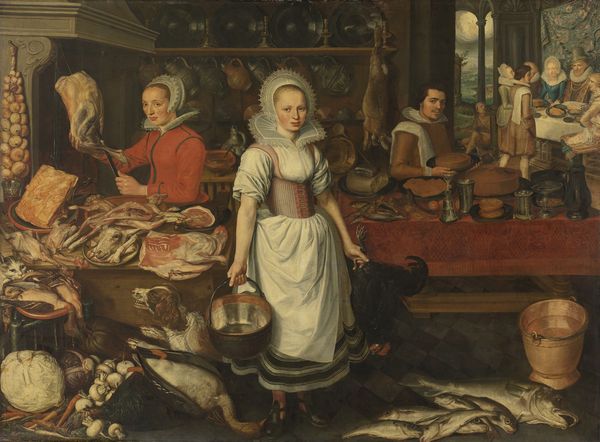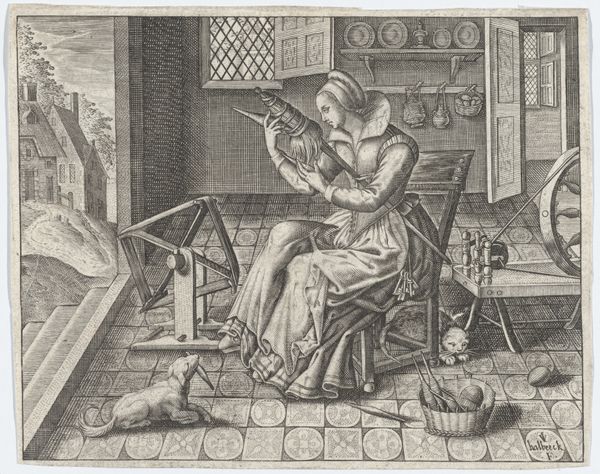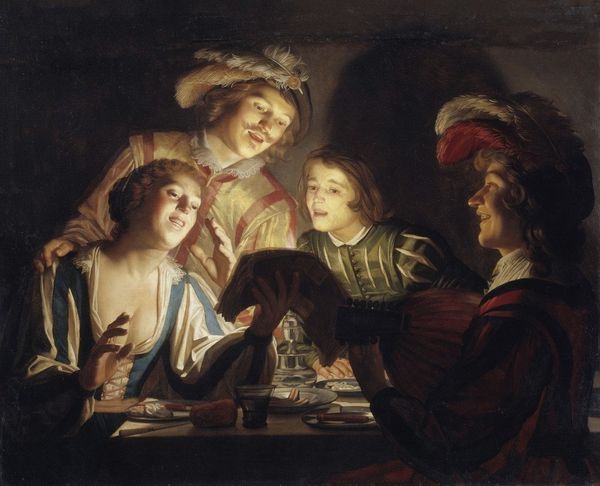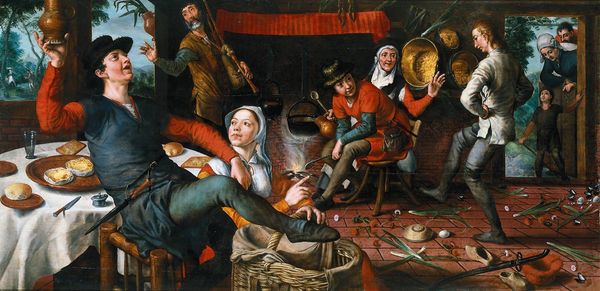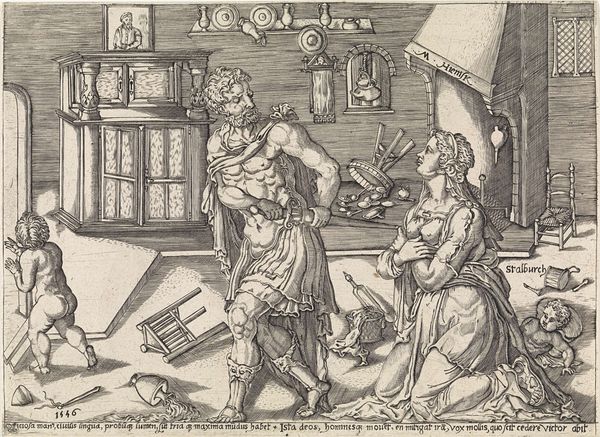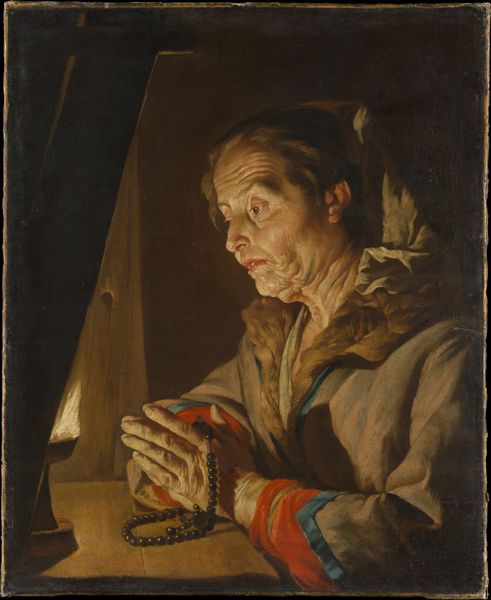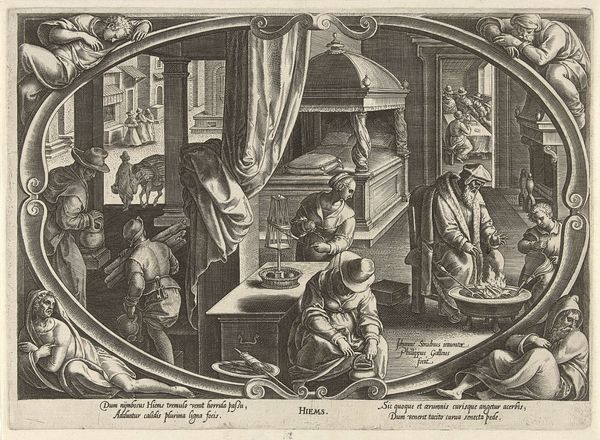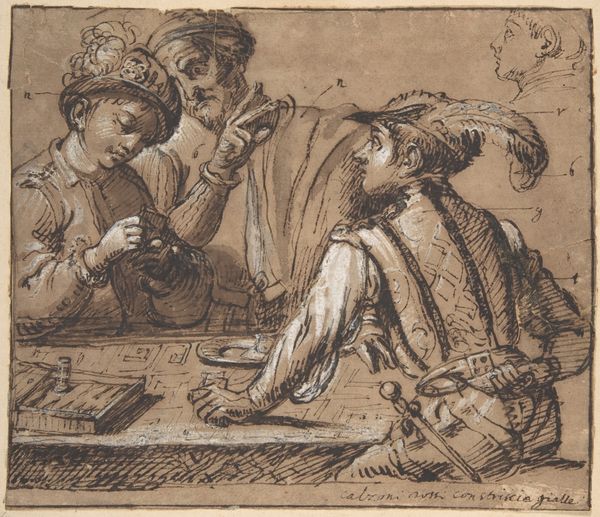
panel, oil-paint, wood
#
portrait
#
panel
#
oil-paint
#
11_renaissance
#
oil painting
#
wood
#
genre-painting
#
history-painting
#
northern-renaissance
Dimensions: 114.7 cm (height) x 143.8 cm (width) x 7 cm (depth) (Brutto), 86 cm (height) x 115.5 cm (width) (Netto)
Marinus van Reymerswale painted "The Merchant and his Wife" in oil on panel. The composition is dominated by the table covered with coins and account books. Notice how the texture and detail in objects like the coins, fur hat, and pages, create a vivid tactile experience. The way Reymerswale uses visual elements of the painting makes it fascinating. The painting is about surfaces and representation, and the textures of wealth and trade. It depicts a detailed scene of commerce but it also has cultural signs and codes. The faces are shown with what could be called harsh realism, which aligns with moralizing and satirical art. The artist shows a deep awareness of the social and economic shifts of his time. These forms and textures in "The Merchant and his Wife" encourage interpretations on the changing values and moral questions that were part of the period. The value of art lies not just in its aesthetic qualities but also in its role as a cultural text open to many interpretations.
Comments
statensmuseumforkunst over 1 year ago
⋮
The merchant - or, perhaps more likely, moneylender – is busy weighing his money, perhaps to make sure that there are no forgeries involved. In the back ground his stack of loan contracts is bulging. The wife eagerly monitors his work, and no one pays heed to the boy in the doorframe. With hands like claws and crowned by extravagant headgear this man illustrates the concept of greed. On the top of a shelf stands an extinguished candle. All light and soul has vanished from a world wholly engrossed with mammon. Reymerswale has painted several variations of this motif, all of them referencing the prototype painted by the Dutch artist Quinten Massys (Louvre). Like Pieter Aertsen (also featured in this room) Reymerswale was from the prosperous city of Antwerp, one of the leading art centres of the 16th century. Apparently the wealth and enormous choice of goods available brought in its wake a similar demand for warnings against the unforgivable deadly sins.
Join the conversation
Join millions of artists and users on Artera today and experience the ultimate creative platform.
